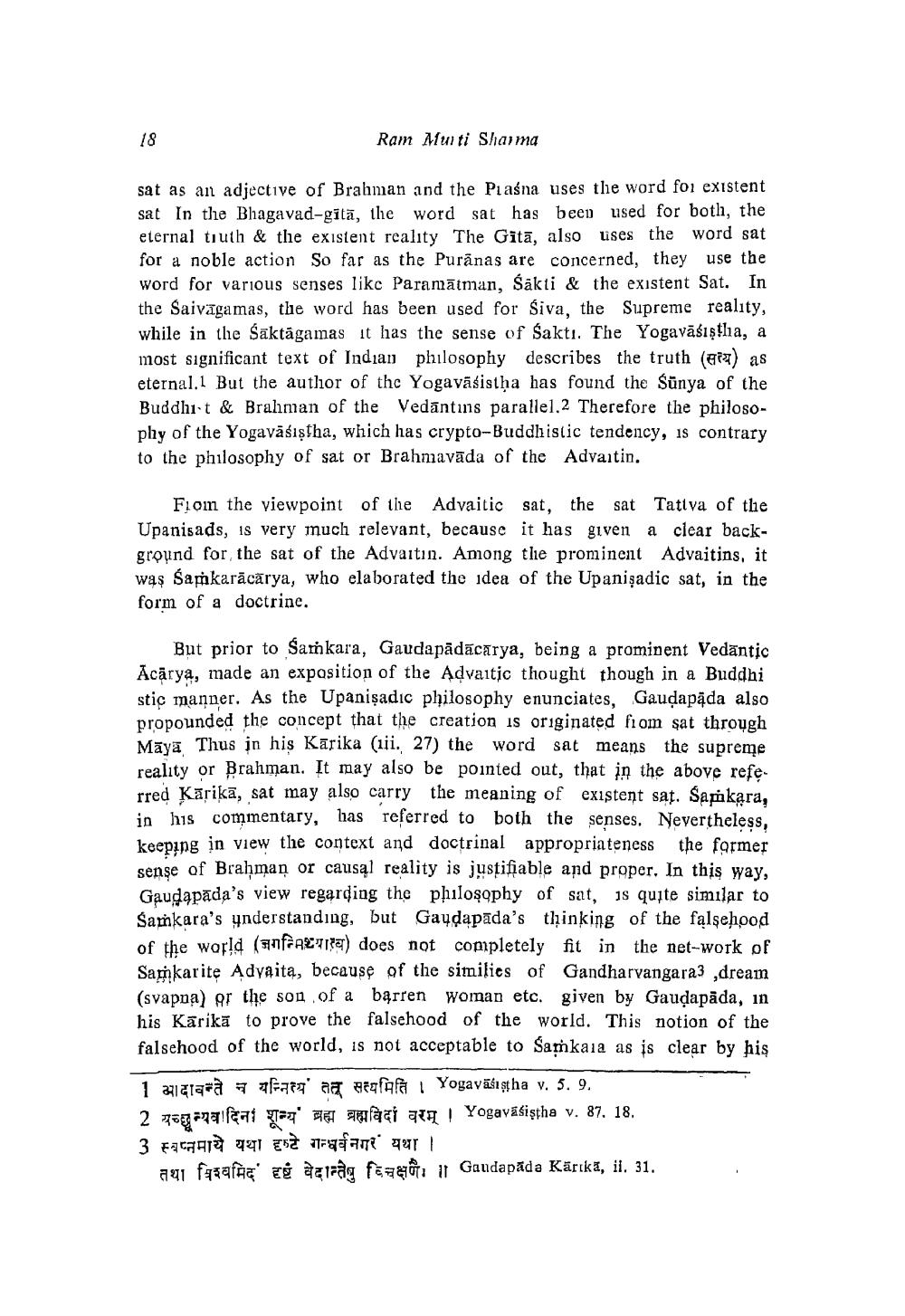________________
18
Ram Murti Sharma
sat as an adjective of Brahman and the Piaśna uses the word foi existent sat in the Bhagavad-gitā, the word sat has been used for both, the eternal truth & the existent reality The Gitā, also uses the word sat for a noble action So far as the Puranas are concerned, they use the word for various senses like Paramātman, Sakti & the existent Sat. In the Saivagamas, the word has been used for Siva, the Supreme reality, while in the Saktāgamas it has the sense of Saktı. The Yogavāśışla, a most significant text of Indian philosophy describes the truth (az) as eternal.1 But the author of the Yogavāśistha has found the Sünya of the Buddht & Brahman of the Vedāntins parallel.2 Therefore the philosophy of the Yogavāśıştha, which has crypto-Buddhistic tendency, is contrary to the philosophy of sat or Brahmavāda of the Advaitin.
From the viewpoint of the Advaitic sat, the sat Tativa of the Upanisads, is very much relevant, because it has given a clear backgroạnd for the sat of the Advaitin. Among tlie prominent Advaitins, it was Samkarācārya, who elaborated the idea of the Upanişadic sat, in the form of a doctrine.
But prior to Sarkara, Gaudapādācārya, being a prominent Vedāntic Ācārya, made an exposition of the Advaitic thought though in a Buddhi stic manner. As the Upanişadıc philosophy enunciates, Gaudapāda also propounded the concept that the creation is originated from sat through Māyā Thus in his Kārika (iii. 27) the word sat means the supreme reality or Brahman. It may also be pointed out, that in the above referred Karika, sat may also carry the meaning of existent sat. Samkara, in his commentary, has referred to both the senses. Nevertheless, keeping in view the context and doctrinal appropriateness the former sense of Brahman or causąl reality is justifiable and proper. In this way, Gaudąpada's view regarding the philosophy of sat, is quite similar to Samkara's understanding, but Gaydapada's thinking of the falsehood of the world (Finfoaria) does not completely fit in the net-work of Samkarite Advaita, because of the similies of Gandharvangara3 ,dream (svapna) or the son of a barren woman etc. given by Gaudapāda, in his Kāríkā to prove the falsehood of the world. This notion of the falsehood of the world, is not acceptable to Samkara as is clear by his
1 31419-a fag' aq hafa Yogavāsıștha v. 5. 9. 2 759 analfai 7=7' r alaci ata | Yogavisiştha v. 87. 18. 3 Facare 991 75 geare
agi fara gazteag for at Gaudapāda Kärtka, il. 31.




